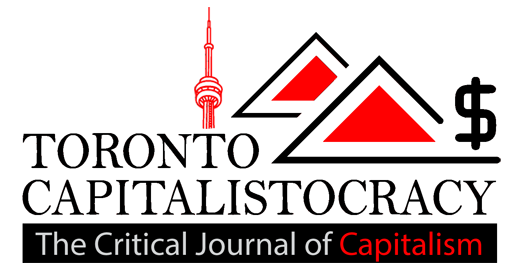Headline News
Fascists Are Using COVID-19 to Advance Their Agenda. It’s Up to Us to Stop Them.

The COVID-19 crisis is a story of a predictable pandemic. It is a result of the willful ignorance of the impact of the climate crisis and unsustainable expansion, a failure of multiple governments and the intentional under-resourcing of public health and medical systems. It results from our societies’ ignoring of the conditions for poor people, the unhoused, disabled and chronically ill people, sex workers, migrants, communities of color and street-based communities, and the exploitation of this crisis by a rich, privileged and powerful fascist minority. Our government had the information, the resources, and the ability to prepare for this pandemic, including supporting those most at risk. We could have had the tests, the masks, the ventilators, the resources and emergency plans.
These are not mistakes. These are choices. We have been left for dead, and it’s not the first time.
Over the past few years we’ve watched the rise of a global fascist movement in the U.S., Russia, India, Brazil, the United Kingdom and many other countries. And, while scholars and writers currently debate whether to call Trump an authoritarian, autocrat or a fascist, it’s clear that he’s not a fan of democratic institutions, and he often uses a fascist playbook. Fascist and authoritarian governments often exploit, accelerate, or create crises to increase their power and further their agendas.
Here’s the fascist emergency playbook:
- Use the emergency to restrict civil liberties — particularly rights regarding movement, protest, freedom of the press, a right to a trial and freedom to gather;
- Use the emergency to suspend governmental institutions, consolidate power, reduce institutional checks and balances, and reduce access to elections and other forms of participatory governance;
- Promote a sense of fear and individual helplessness, particularly in relationship to the state, to reduce outcry and to create a culture where people consent to the power of the fascist state;
- Replace democratic institutions with autocratic institutions using the emergency as justification;
- Create scapegoats for the emergency, such as immigrants, people of color, disabled people, ethnic and religious minorities, to distract public attention away from the failures of the state and the loss of civil liberties.
These steps are currently in progress. In the past few weeks, multiple cities have started to arrest people for “violating” stay-at-home and physical distancing decrees. Under Trump’s current emergency powers, the federal government has the right to detain people if it’s determined that their “illness” could cross state lines. Federal and state governments are currently laying the foundation for further repressive actions. In Florida, their government is considering detaining and isolating sick people without their consent — for “public health.” In Louisville, Kentucky, COVID-19 patients are being placed on house arrest. The Department of Justice is seeking to use emergency powers to detain people indefinitely without trial. In some cities people are being charged and detained for “terroristic threats” after concerns they had attempted to intentionally spread COVID-19. And Trump persists in calling COVID-19 the “Chinese virus,” foisting responsibility for the global crisis onto a particular group.
Trump’s use of fascist strategies is present, and accelerating. We must pay attention.
A Pathway Towards Liberation
Despite these grim circumstances, fate has handed us a society-changing opportunity wrapped within a tremendous challenge. We must think in terms of Antonio Gramsci’s concept of interregnum, a time period in which, “the old (world) is dying and the new cannot be born.” In this liminal space, we have the opportunity to define that new society, and call it forth. Time is limited and the opportunity is precious. So, where does the left go from here, in terms of both addressing increased repression and moving towards a more liberated future?
Creating an Emotionally and Spiritually Captivating Vision
Fascists have a worldview and a clarity of purpose that can be alluring to their supporters. Using actual or exaggerated scarcity and naming themselves as societal “victims,” they use promises of restoring society to a mythical past, to override their followers’ sense of morality. Sound familiar? Scarcity, real or imagined, fuels fascism. And COVID-19 is creating an abundance of actual and perceived scarcity, from rising unemployment, reduced access to hospitals and shortages in medication, medical supplies, groceries and cleaning supplies.
Yet, systemic failure can give birth to systemic opportunities. To resist how COVID-19 is being used to justify a potentially permanent loss of civil liberties, we need to solidify and amplify a vision of liberation that is emotionally and spiritually compelling. We need the kind of vision that gets people out of bed, and inspires them to take bold actions, while navigating an ever increasingly terrifying world. We have been left for dead, and it’s not the first time.
Historian Timothy Snyder talks about how a sense of inevitability increases complacency under tyrannical governments. Inevitability means that people believe that nothing can truly be done to make change, and therefore they become both complacent and complicit in the shifts of political terrain. To move toward the type of vision that topples fascism, we need greater clarity of purpose on the left. Here are the questions that I think we need to answer, in order to move forward with a visionary organizing agenda that not only survives emboldened authoritarian movements, but moves us towards liberation.
- How will we address harm and violence within our communities? What is the role of the state (if any) in navigating harm or violence?
- How will we build movements with space for all of our people — those who are currently sick, chronically ill, disabled, survivors, those who are poor, Black, Indigenous, and people of color, queer and trans people, currently incarcerated folks, migrants, those who are targeted and criminalized, and so many more? How do we make room to discuss issues of power and privilege, and move through conflict, without it suspending or ending other forms of political work?
- With “in-person organizing” radically shifting or temporarily stopping — what does mass resistance, mass protest, and base building organizing look like? What new tactics will we use to create the sense of community that in-person movement building has created?
- Do we believe in governments? If not, what systems do we propose to create more equitable change and redistribute resources? If so, what is liberatory governance, what does it require of us as individuals and of the state?
- With so many people on the left disinvested and dissatisfied with both the Democrats and the Republican political parties — is it time for another party? Should we be building more power within the Democratic Party? What is our connection to large-scale political struggle and independent political power?
- How will we push ourselves to build the movements we need and increase time for rest, collective care, and our health? How can we do this and increase our discipline, rigor, and accountability to each other?
Building Deep Relationships to Strengthen Our Movements
Earlier this week my neighbor said to me, “I know that you have asthma. I know the folks in Apartment 3 have a child who is immunocompromised. So I have decided to mop the hallway, wipe down the elevator, and wipe down the garbage chute, as often as I can because I want to make sure that you all are alright.” In the past my neighbor and I had commiserated when our building didn’t make repairs or when other neighbors acted out. But this pandemic has transformed our relationship to a place of deeper interdependence. This crisis presents an opportunity for all of us to build stronger, life-saving relationships that also strengthen our movements. I feel incredibly inspired by the increase in mutual aid organizing that’s occurring all over the country. I’m particularly moved by the potential of mutual aid to deepen our relationships with friends, family, and how those networks can become interconnected to create a web of resistance.
History shows us that under repressive governments, people need to take big risks to resist and dismantle state oppression, and those risks must be supported by strong relationships. Whether it was non-Jewish people supporting Jewish families to hide and escape during the Holocaust, or people joining underground resistance movements under occupied countries during World War II, people took big risks to resist authoritarian governments, often when asked by people they knew well and trusted. Deep relationships allow us to build the solidarity we need, and to address targeting of communities that’s already occurred.
Fascism relies on scapegoats. Fascists and authoritarian governments use emergencies as justifications to take quick and extreme steps to further oppress marginalized communities. With Trump currently blaming China and migrants for the coronavirus, we need deep forms of cross-community solidarity so that as people are targeted based on their identity or based on having COVID-19, we will show up in solidarity, with protest, and other disruption strategies. Scapegoats also require public complicity. The public needs to ignore and simultaneously participate in this oppression. While physical distancing is making it difficult for people to build, maintain relationships, and show up for each other. People will be most likely to disrupt these actions through their trusted relationships.
Sustaining Consistent Resistance Through Many Tactics
Within this global pandemic, life is increasingly more complicated for many people. We now have to figure out how to shift our lives to regularly check our temperatures, overcome barriers to getting groceries and check on our sick family and neighbors while maintaining a safe distance. And we must do all this without touching our faces and while adapting to new work conditions or confronting our lack of employment — and mobilize. The inherent multi-dimensional juggling that living within this crisis requires offers us the strategic blueprint for our movement work.
Trump will be moving to entrench and consolidate power, escalate the crisis and further criminalize dissent. To push back on these strategies, while navigating taking care of loved ones and ourselves, we will need to increase our political power, engage in a wide range of strategies and engage a broader set of political allies. It will take a show of force to contend with and defeat Trump’s agenda. History shows us that broad alliances, even temporary ones, are required to defeat autocratic and fascist forces. Fate has handed us a society-changing opportunity wrapped within a tremendous challenge.
To survive this, we need to let go of “either/or thinking” and embrace the complexity of this moment. I’ve noticed many folks get into a mindset that one tactic or strategy will create change, and is inherently oppositional to the others, especially when talking about healing, organizing for policy change and mutual aid.
We cannot allow this pandemic to re-solidify our separation from each other within progressive movements. Policy-based organizing won’t singlehandedly transform society. Mutual aid, in isolation, won’t be able to feed all the folks that need food. It’s necessary to pool our strategies and work together to support oppressed people in living longer, and we must connect this work to the organizing we need to create structures of liberatory governance.
The “real work” will involve organizing for policies that increase resources for the most vulnerable within our communities, while creating networks of care and support, while pushing the federal government to increase access to medical supplies and resources for low-income communities, while also taking care of ourselves — our health and our spirits.
Holding Pain, Grief, Sickness and Discomfort
Organizing against authoritarian, fascist and autocratic governments is often done while people are simultaneously surviving and grieving the violence of those systems. Holding grief and sickness while building political work is something that is no stranger to disability justice, to HIV and AIDS movements, racial justice movements, to movements against police violence, to survivor-led movements, to trans and queer organizing, to sex worker organizing and many other struggles. We must draw from these movements’ lessons in the current movement.
We must integrate a healing justice framework deeply to support us in navigating trauma, grief, care taking and boundary setting within our organizing spaces, so that we can continue to have vibrant movements that are not harmful to ourselves in their pacing. As named by Cara Page and the Kindred Southern Healing Justice Collective, Healing Justice is a framework that identifies how we can holistically respond to and intervene on generational trauma and violence and to bring collective practices that can impact and transform the consequences of oppression on our bodies, hearts and minds.
Simultaneously we will also need to push back on a fear and disdain for discomfort within our movement building. Some of the people that we love and know will die, and their deaths will be directly connected to the failures of the U.S. government to manage this pandemic. While our work should also center joy, we are entering a time period that we will need to do especially hard, uncomfortable and painful work — as survival often necessitates. At the same time, people who were not previously involved in activism will be willing to take action now, seeing the dire circumstances in their lives, families and communities. In order to support new people in our movements, we must navigate their material needs, their health and their grief. We can win, as long as we do not give up on ourselves.
This moment offers a grim opportunity. Yet it also creates the conditions for the rapid expansion of our movements that we will need to contend with the right wing’s agenda.
The Road Ahead
While things feel devastating now, there will come a time when these conditions will feel normal to us. Remember back when the Muslim travel ban felt improbable and extreme? Two weeks from now, arresting people for leaving their houses could be the new normal. Under normalization, people can preemptively give up, or decide not to protest, or react to repressive actions. Organized, politically engaged communities can resist normalization.
We have a moment of opportunity. And the right has the same window. As you read this article, right-wing strategists are likely also figuring out their next steps — they’re determining how to use the COVID-19 crisis to quickly move an agenda of privatization, criminalization and anti-immigrant sentiment, in the name of public health and safety. I believe that we have everything we need to oppose them and to move a liberatory vision, but we need to build more political power, increase our engagement, and find healthier ways to sustain our activism and organizing.
Naomi Klein recently noted, “The future will be determined by whoever is willing to fight harder for the ideas they have laying around.” These times are asking so much of us. It is terrifying, yet possible, to build the society we want from this moment. These times require us to find a way to balance our commitments to ourselves, our families, and our communities. And I truly believe that we can win, as long as we do not give up on ourselves. Fascists can’t win without our concessions, our normalization, our inaction, and our complicity. The old world is dying, and a new more liberated society, lies just beyond our current vantage point. Let’s give it everything that we’ve got.

Headline News
How Canadian churches are helping their communities cope with the wildfires

As wildfires burn across Canada, churches are finding ways to support their members and the broader community directly impacted by the crisis.
According to the Canadian Interagency Forest Fire Centre, as of June 13, there are 462 active fires across Canada – and 236 of them classified as out of control fires.
Whether it’s through phone calls or donations to community members, here’s how a few churches across Canada are handling active wildfires and the aftermath in their regions.
Westwood Hills, N.S.: St. Nicholas Anglican Church
In Nova Scotia, St. Nicholas Anglican Church and other churches in the area are collecting money for grocery cards to give to families impacted by the Tantallon wildfire.
Right outside of Halifax, N.S., the Tantallon wildfire destroyed 151 homes. More than 16,000 people evacuated the area due to the fire.
The fire is now considered contained, but Tanya Moxley, the treasurer at St. Nicholas is organizing efforts to get grocery gift cards into the hands of impacted families.
As of June 12, four churches in the area – St. Nicholas, Parish of French Village, St Margaret of Scotland and St John the Evangelist – raised nearly $3,500. The money will be split for families’ groceries between five schools in the area impacted by the wildfire.
Moxley said she felt driven to raise this money after she heard the principal of her child’s school was using his own money to buy groceries for impacted families in their area.
“[For] most of those people who were evacuated, the power was off in their subdivision for three, four or five days,” she said. “Even though they went home and their house was still standing, the power was off and they lost all their groceries.”
Moxley said many people in the area are still “reeling” from the fires. She said the church has an important role to help community members during this time.
“We’re called to feed the hungry and clothe the naked and house the homeless and all that stuff, right? So this is it. This is like where the rubber hits the road.”

Headline News
Is it ever OK to steal from a grocery store?

Mythologized in the legend of Robin Hood and lyricized in Les Misérables, it’s a debate as old as time: is it ever permissible to steal food? And if so, under what conditions? Now, amid Canada’s affordability crisis, the dilemma has extended beyond theatrical debate and into grocery stores.
Although the idea that theft is wrong is both a legally enshrined and socially accepted norm, the price of groceries can also feel criminally high to some — industry data shows that grocery stores can lose between $2,000 and $5,000 a week on average from theft. According to Statistics Canada, most grocery item price increases surged by double digits between 2021 and 2022. To no one’s surprise, grocery store theft is reportedly on the rise as a result. And if recent coverage of the issue rings true, some Canadians don’t feel bad about shoplifting. But should they?
Kieran Oberman, an associate professor of philosophy at the London School of Economics and Political Science in the United Kingdom, coined the term “re-distributive theft” in his 2012 paper “Is Theft Wrong?” In simplest terms, redistributive theft is based on the idea that people with too little could ethically take from those who have too much.
“Everybody, when they think about it, accepts that theft is sometimes permissible if you make the case extreme enough,” Oberman tells me over Zoom. “The question is, when exactly is it permissible?”
Almost no one, Oberman argues, believes the current distribution of wealth across the world is just. We have an inkling that theft is bad, but that inequality is too. As more and more Canadians feel the pinch of inflation, grocery store heirs accumulate riches — Loblaw chair and president Galen Weston, for instance, received a 55 percent boost in compensation in 2022, taking in around $8.4 million for the year. Should someone struggling with rising prices feel guilty when they, say, “forget” to scan a bundle of zucchini?

Headline News
The homeless refugee crisis in Toronto illustrates Canada’s broken promises

UPDATE 07/18/2023: A coalition of groups arranged a bus to relocate refugees to temporarily stay at a North York church on Monday evening, according to CBC, CP24 and Toronto Star reports.
Canadians live in a time of threadbare morality. Nowhere is this more obvious than in Toronto’s entertainment district, where partygoers delight in spending disposable income while skirting refugees sleeping on sidewalks. The growing pile of luggage at the downtown corner of Peter and Richmond streets resembles the lost baggage section at Pearson airport but is the broken-hearted terminus at the centre of a cruel city.
At the crux of a refugee funding war between the municipal and federal governments are those who have fled persecution for the promise of Canada’s protection. Until June 1, asylum seekers used to arrive at the airport and be sent to Toronto’s Streets to Homes Referral Assessment Centre at 129 Peter St. in search of shelter beds. Now, Toronto’s overcrowded shelter system is closed to these newcomers, so they sleep on the street.
New mayor Olivia Chow pushed the federal government Wednesday for at least $160 million to cope with the surge of refugees in the shelter system. She rightly highlights that refugees are a federal responsibility. In response, the department of Immigration, Refugees, and Citizenship Canada points to hundreds of millions in dollars already allocated to cities across Canada through the Interim Housing Assistance Program, while Ontario says it has given nearly $100 million to organizations that support refugees. But these efforts are simply not enough to deliver on Canada’s benevolent promise to the world’s most vulnerable.
The lack of federal generosity and finger-pointing by the city has orchestrated a moral crisis. It’s reminiscent of the crisis south of the border, where Texas governor Greg Abbott keeps bussing migrants to cities located in northern Democratic states. Without the necessary resources, information, and sometimes the language skills needed to navigate the bureaucratic mazes, those who fled turbulent homelands for Canada have become political pawns.
But Torontonians haven’t always been this callous.
In Ireland Park, at Lake Ontario’s edge, five statues of gaunt and grateful refugees gaze at their new home: Toronto circa 1847. These statues honour a time when Toronto, with a population of only 20,000 people, welcomed 38,500 famine-stricken migrants from Ireland. It paralleled the “Come From Away” event of 9/11 in Gander, N.L., where the population doubled overnight, and the people discovered there was indeed more than enough for all. It was a time when the city lived up to its moniker as “Toronto, The Good.”
Now, as a wealthy city of three million people, the city’s residents are tasked with supporting far fewer newcomers. Can we not recognize the absurdity in claiming scarcity?




